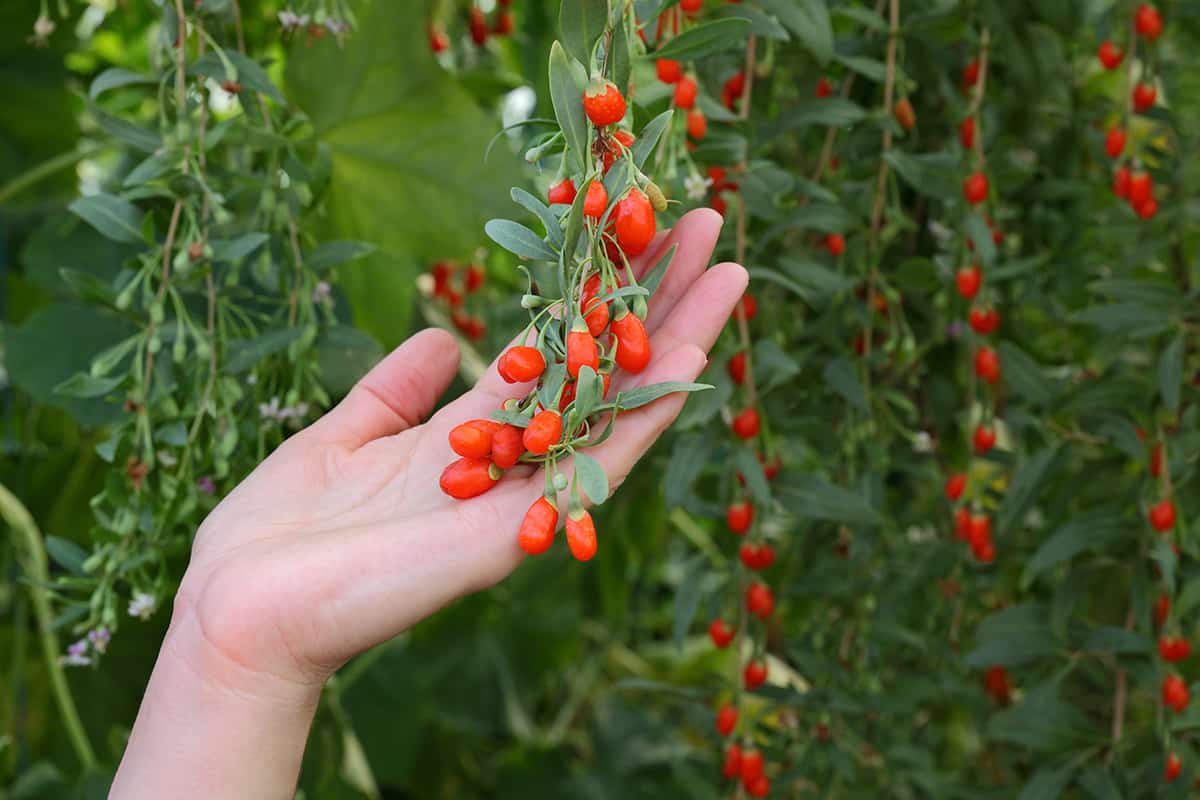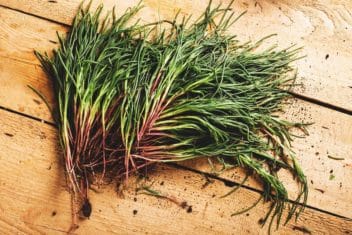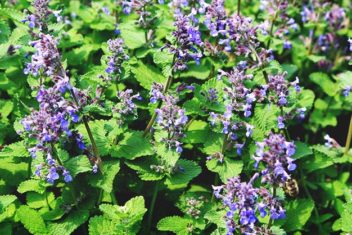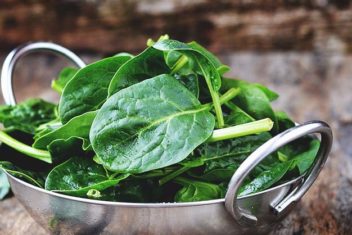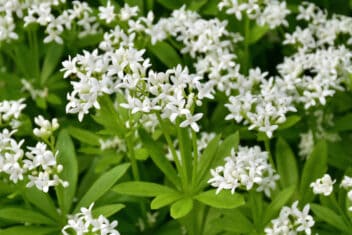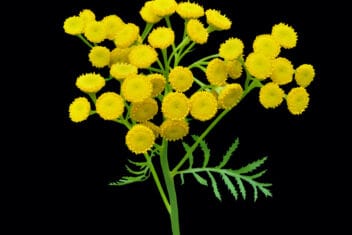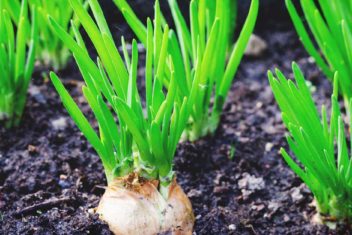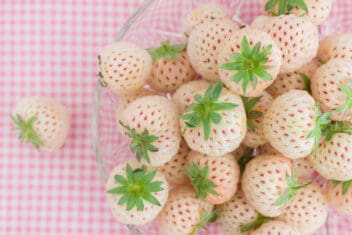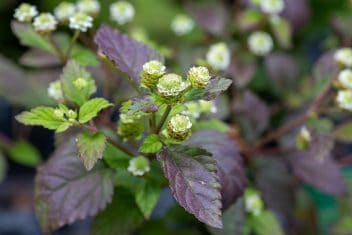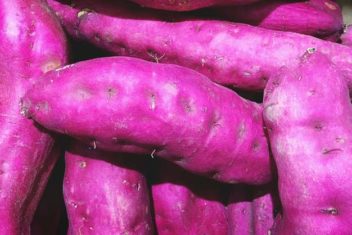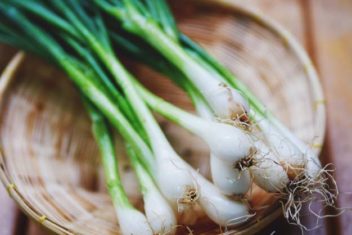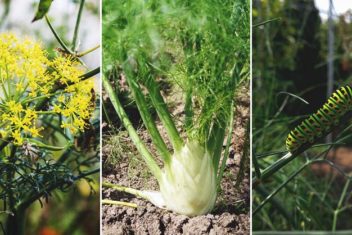When I heard goji berries were a healthy superfood, I went to buy the fresh berries in the supermarket, but no one had them. I realized if I wanted fresh goji berries, I would have to start growing them myself.
Luckily, I discovered that they’re easy to grow, and you can get a good-sized harvest off of one plant.
Now, a couple of seasons later after first planting them, they’re my favorite berries to grow, simply because they’re so fuss-free and the harvest is so plentiful.
What Are Goji Berries?
Native to East Asia, goji berries are loaded with vitamins A and C. They’re also high in antioxidants.
Goji berries, also called wolfberries, have been recognized for their healthy attributes in Asian communities for generations. Once they were “discovered” by Westerners, the price and demand went up.
From the nightshade family, goji berries come from two closely related boxthorn species. These are Lycium chinese and Lycium barbarum.
The bushes get about 12 feet tall in their natural habitat, but most are kept under six feet through pruning. In the spring, the slightly thorny plants are covered in pretty purple blossoms followed by red berries.

How to Plant Goji Berries
Goji berries grow well in USDA Growing Zones 5 to 10, though you might be able to get them to survive in colder zones with some protection. They do best in full sun with just a little afternoon shade.
They’re in the same family as tomatoes, so they need similar conditions.
For best results, aim for a pH of 6.5 to 8.1. The soil should be well-draining and loamy. To create nice, loose, rich soil if you don’t already have it, add compost and dig in well before planting your goji berries.
The plants should be about five feet apart, though you can also plant them closer to create a hedge or encourage them to climb up a wall or trellis.
Goji berries have a similar growth habit as plants like raspberries, so they’ll be easier to harvest if you train them along a trellis or other support.
Planting Seed
Many people opt for growing goji berries by seedlings on their first go.
That’s because seedlings are easier to grow. Growing by seed takes a long time and you won’t have a harvest for up to three years. It also takes more preparation.
However, growing the plants by seed is a straight-forward process, and the seeds have a good germination rate.
Plant a seed in a six-inch pot using a good quality seed raising mix. Place seeds about 1/4 inch deep. Keep the medium moist with a spray bottle until the seedlings emerge. Make sure the soil is exposed to a lot of light.
Reduce watering once the seedlings emerge, but keep the plant in bright, direct sunlight.
Harden off before transplanting outside following the instructions below.
Planting Seedlings
Goji berries seedlings are usually available at most plant nurseries and specialty online stores. Planting should take place in the spring after the last frost has passed.
To plant, dig a hole twice the width and depth of the root system. You need to keep the soil moist until you start to see new growth. At this point, you can allow the top of the soil to dry out before watering again.
Goji berries are reasonably drought tolerant after the appearance of the new growth.
Planting Cuttings
I planted my first goji berry plants from cuttings. There are some complicated ways to do this, but this is the simple version.
Cuttings are best taken in spring or summer and in the morning when the plant’s moisture content is higher than in the afternoon.
Find healthy branch tips and take cuttings four to six inches in length. Cut directly under a leaf node.
Remove the foliage from the lower portion of the cutting and dip the bar end into root hormone. Place this end into a good quality seed-raising mix and keep the soil moist.
To speed up the formation of roots, place the container on a warming pad set to 75ºF.
I check for rooting when I see new growth at the top of the cutting. Transplant out in the spring when there are no more frosts expected.
Plant seedlings or cuttings in rows, placing the plants about five feet apart. You need to give them plenty of space to spread out.
Caring for Goji Berry
Once your goji berries are happily growing it’s time to take care of them. Here’s how.
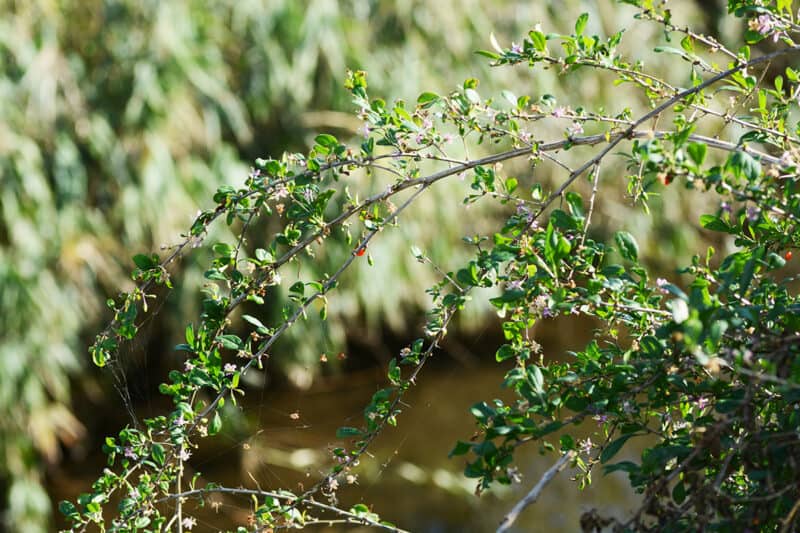
Fertilizer
Goji berries don’t respond well to heavy fertilizing or rich compost. I find as long as you have fertile soil, you won’t need to fertilize or add compost at all.
If you have poor soil, be sure to amend it prior to planting. Then, plan on fertilizing once a year.
If your plant isn’t performing as hoped after a couple of years, add a small amount of balanced fertilizer, but don’t overdo it.
Water
Water goji berries well for the first year. Try not to let the soil dry out too much.
They are more drought-tolerant after they’ve established themselves for a year and can be watered once the soil dries out to about an inch deep.
Pruning
Goji berries respond well to pruning, and good pruning should maximize your fruit harvest.
Don’t prune in the first year. Let the plant establish itself and get strong. In the dormant winter season, prune out weak, skinny canes along with dead or diseased wood.
Most of the fruit of goji berries develops on new growth. In the second or third year, when many new canes have sprouted from the base, choose a strong, straight, and upright cane to be your main trunk of the shrub.
Cut this main branch down to about 20 to 24 inches to encourage lateral growth and new wood.
In the growing season, prune out any dominant canes that go straight up, as you want to encourage lateral or side growth. Remove excess suckers and most of the old wood, leaving just two or three old canes.
Companion Planting for Growing Goji Berries
Goji berries do well in a group on their own or with a variety of other plants. I’ve successfully grown them with:
- Tomatillos
- Blueberries
- Grapes
- Raspberries
- Tomatoes
- Red and white currants
Common Problems and Solutions for Growing Goji Berries
While they’re generally hardy, there are a few diseases and pests to watch out for.
Anthracnose
This is a fungal disease that takes you by surprise. Just when you think you’ve beaten anthracnose for the season, it infects the fruit as it’s ripening.
If you have it, you’ll see little spots turn into bigger spots and the fruit will rot on the plant.
Make sure you allow for plenty of air circulation and water at the plant’s base, not the foliage. Mulch well to avoid the spores in the soil from being splashed up onto new plants.
Blight
If you start to see rings on the foliage, you may have blight. It’s widespread in humid or cramped conditions. The leaves die and drop off the plant, affecting the size and quality of the fruit.
Read about blight in this informative article.
Good garden hygiene is paramount to avoid blight.
Powdery Mildew
Powdery mildew is a common disease, though you won’t frequently see it in goji berries. If you want to learn how to identify and deal with this disease, we’ve covered it all in this article.
Thrips
The last thing you want is a thrips infestation, so address an infestation as soon as you notice it. This article covers identifying and dealing with thrips.
Harvesting Goji Berries
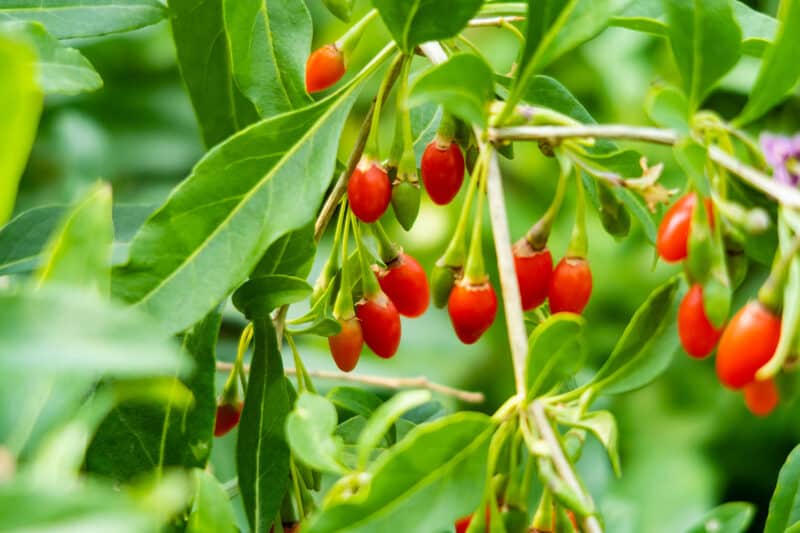
Harvest when the berries are dark red. This is normally about 35 days after the blooms have faded.
You can eat the whole berry, juice it or use it in various recipes. The leaves and berries make a tasty tea or turn the berries into a soup. You can also create an incredible jam or put them in desserts.
Make a smoothie mixed with some other fruits, or toss the berries with diced squash and roast it all in the oven with some fat like olive oil.
Harvest small amounts to use straight away because they don’t store well at all. They deteriorate quickly, which is why you rarely see them in stores. You should be able to gather the berries easily by slightly twisting the fruit.
